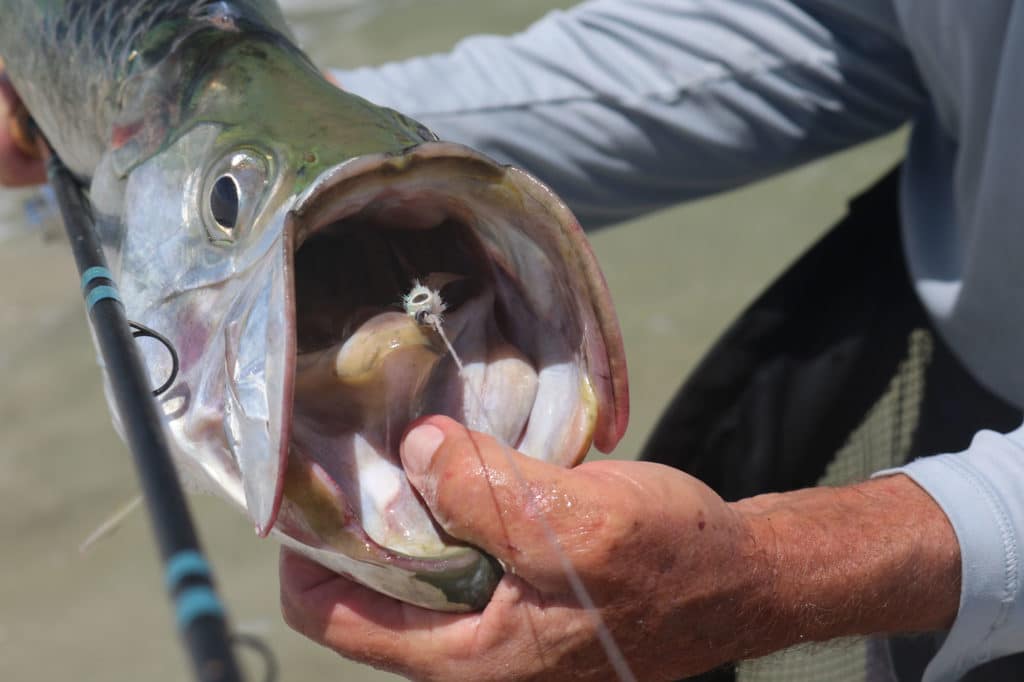
There will always be debate as to why in the heck mullet jump, but there is no questioning that this hardy prey species is at the top of the menu for most of the saltwater gamefish we chase.
Because of the sheer size many mullet attain—some grow as big as 30 inches—it is mostly the juveniles, commonly known as finger mullet, that many gamefish target. And that’s a good thing for fly rodders. Otherwise, we would need 14-weight rods to deliver a mullet fly of adult proportions!
Finger mullet, whether juvenile striped or white mullet (also known as black and silver mullet, respectively), can be imitated with a number of established fly patterns of 3 to 5 inches in length, tied on No. 1 to 3/0 hooks.
Although a Lefty’s Deceiver is a passable impressionistic mullet, the mullet’s “cylindrical” body type can be better simulated with other fly-tying styles, using bulkier materials. The following are five of my favorite examples, all of which have proven very effective for me over the years.
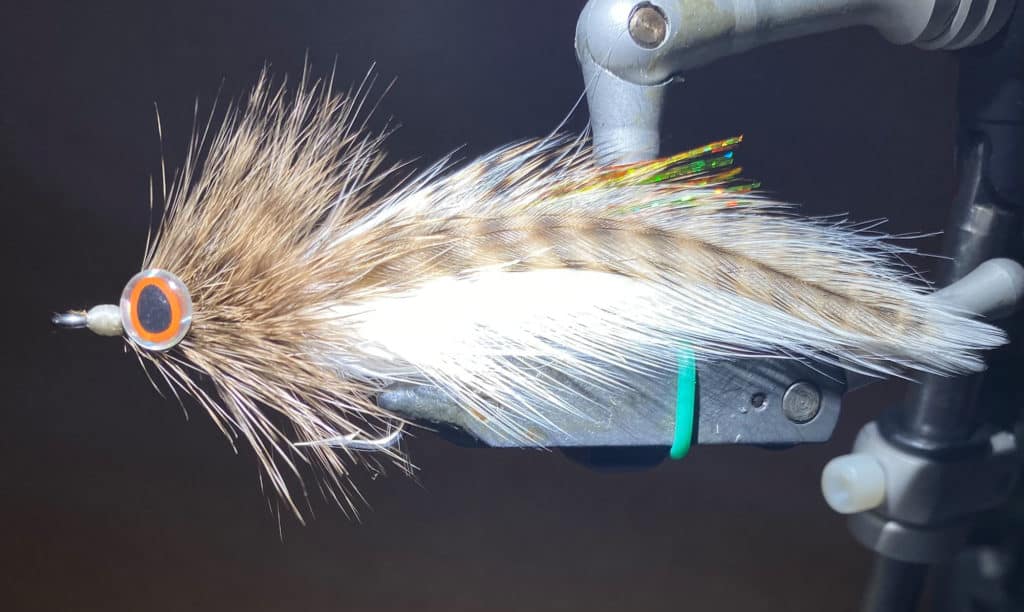
Sea-Ducer
The Sea-Ducer is a terrific impressionistic mullet. It’s not by accident that this venerable all-hackle pattern (originally known as the Homer Rhode Tarpon Streamer) has caught thousands of snook in roadside Everglades canals for the creator and other saltwater fly fishing pioneers. Snook in those environs live on finger mullet, when they aren’t smacking frogs or mosquito minnows, at times the more prevalent forage.
There was a time I fished brown-and-grizzly Sea-Ducers with copper or gold flash for everything—snook, redfish, spotted seatrout and tarpon—in Florida Bay, long before delving into more realistic mullet patterns. It’s quite productive around mudding mullet, and can be fished at the surface with steady long draws on the line, or allowed to sink a bit and swam seductively over shallow grass and flats potholes. I sometimes add a mono weed guard to the palmered hackle head, though the hackles alone shield the hook point somewhat.
Some days, a gaudy version—all chartreuse, red-and-yellow, or hot pink-and-white —produce best around mullet schools. It simply stands out, rather than getting lost in the crowd.
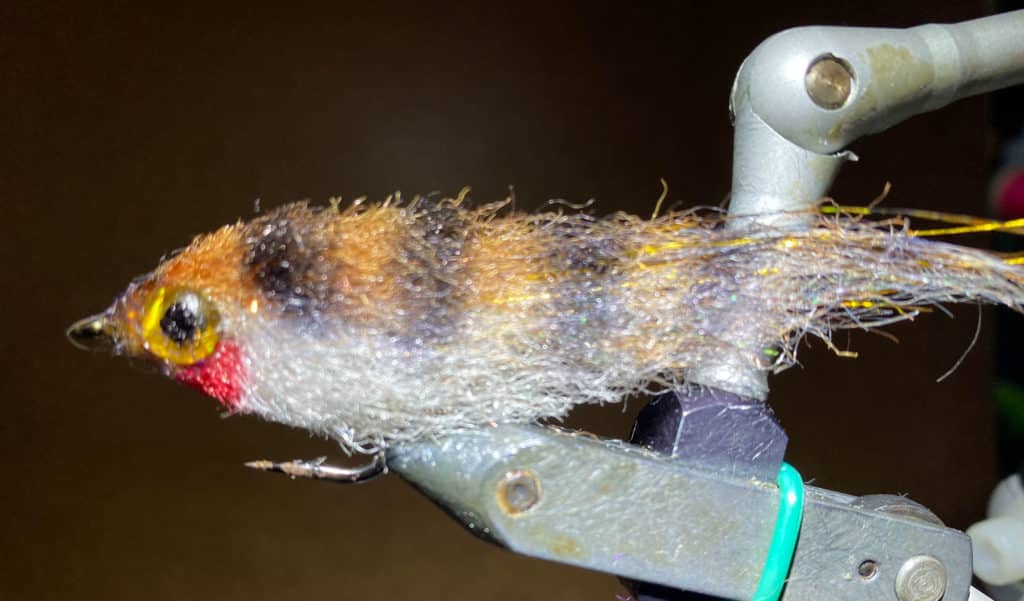
EP Mullet
For Enrico Puglisi patterns, it’s the EP fiber that makes it possible to sculpt the shape of any baitfish you desire. The technique of tying and trimming reminds me of the old Aztec style of tying, which used yarns as the main material, tied in perpendicular to the shank to create bulk. It’s a one-material tie, other than eyes and a little flash, if desired (mullet are not as flashy as other baits).
This pattern never fouls on the cast, holds its shape perfectly in the water, and is super durable. It stands up to a lot of abuse when the mullet bite is on.
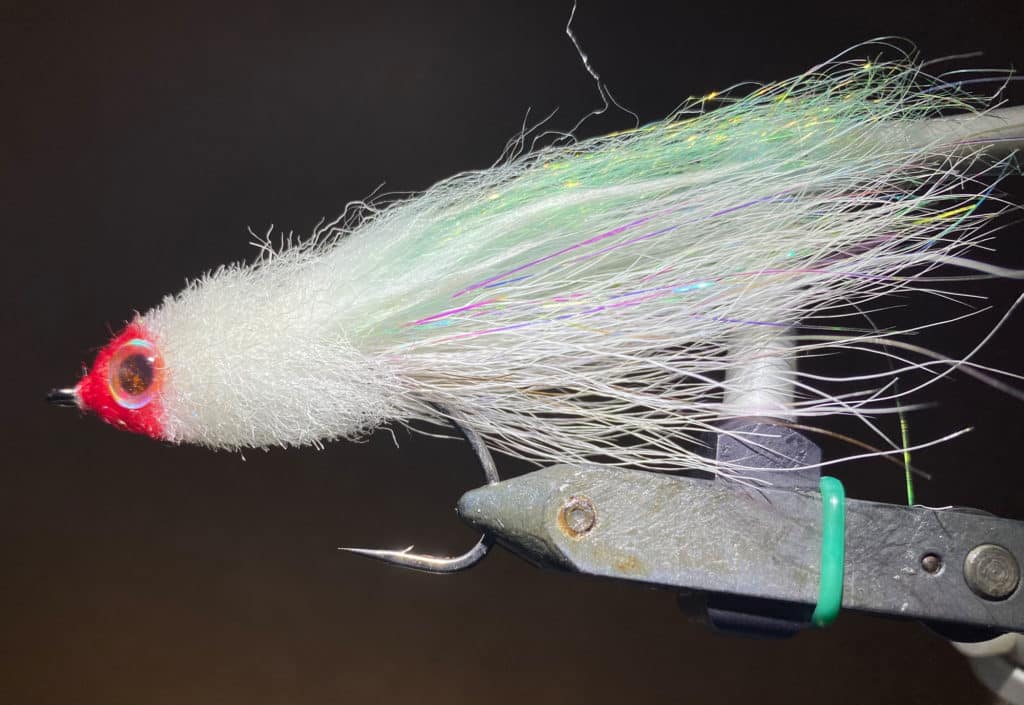
MirrOlure Fly
The classic mullet-imitating plug, the MirrOlure 52MM is a slow-sinking twitch bait that, several decades after L&S Bait Company first introduced it, continues to amass countless catches. The fly replica of said plug gained notoriety in 1993, when an angler named Rex Garrett landed a 30-pound, 4-ounce snook with it in Chokoloskee, Florida. I first saw one, a red-and-white version, in a now-defunct Ft. Lauderdale fly shop. Naturally, I quickly tied a dozen and fished them in brackish Everglades canals, Chokoloskee’s backcountry, and Florida Bay mud flats. I also fed a few to big winter ‘cudas on oceanside Biscayne Bay flats. I say fed because they all cut me off during skyrocketing leaps, and just kept on going.
I tied the fly without weight, and some with lead wire on the hook shank. Later I also tied some with dumbbell eyes, which had just become popular in the late ’80s.
For tarpon in Florida Bay, I used all purple or purple-and-black versions where mullet muds clouded the water. They stood out well, and tarpon of all sizes pounded them.
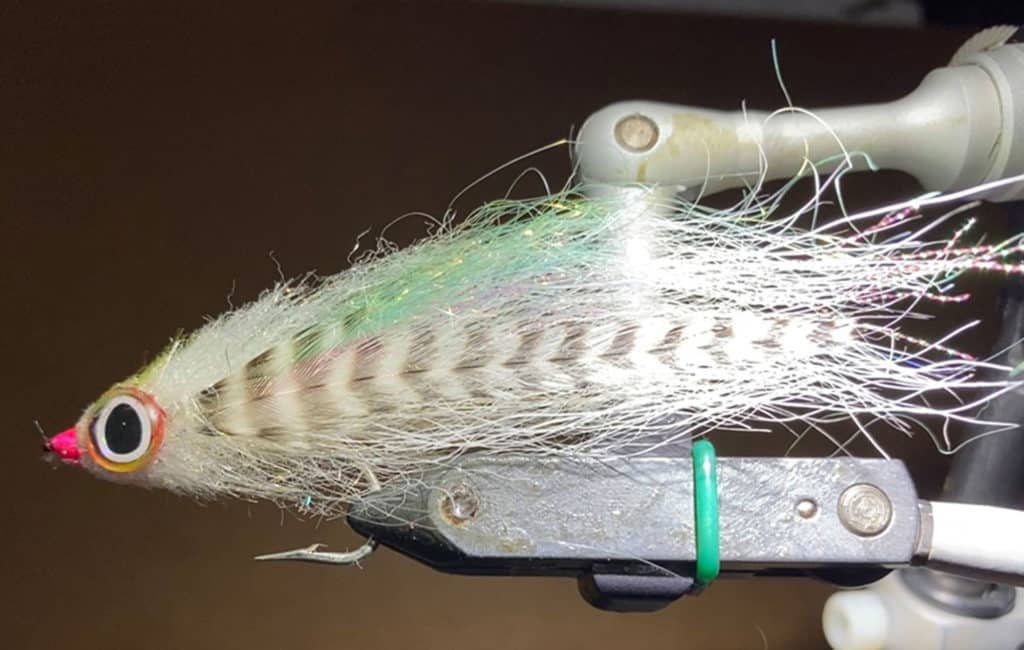
Midnight Mullet
Okay, I’m going to brag on a mullet pattern that I patterned after others (is there really anything original anymore?). It is trademarked as Conner’s Midnight Mullet by the Umpqua company, and the “midnight” designation came from the fact that I primarily fish it at night, around bridges for big snook. Nevertheless, this fly it is also deadly for beach-cruising snook and tarpon.
I prefer a tail of dense white bucktail with pearl flash, though a strip of rabbit or Craft Fur adds action, and the clipped, shaped head is made of pearl palmering chenille, a great material for forming baitfish heads. I sometimes add a grizzly hackle to each side. The eyes are domed decal eyes attached with hot glue.
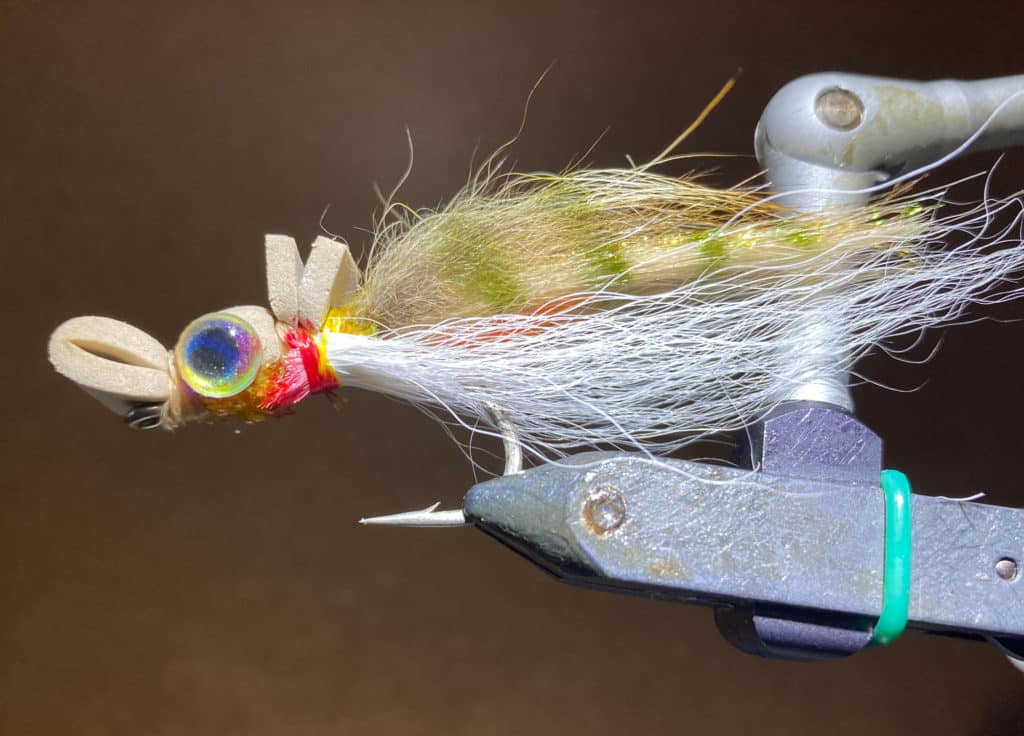
Finger Gurglet
Mullet do a lot of feeding on the bottom, for detritus (rotting vegetation), but they also sip algae and plankton from the surface. In water with a low percentage of dissolved oxygen, they naturally spend more time on top. And they pile up in dense schools when cornered by predators, making you wonder how the heck will your fly ever get noticed? First, work the perimeter of the bait school, instead of casting smack into the fray. Second, make your fly stand out and look like an easy mark by stripping it to mimic a struggling or injured prey.
Poppers are ideal for this, and the popular Gurgler can be tied to imitate a finger mullet (hence my “Finger Gurglet” nickname for this pattern), anywhere from 3 to 6 inches long. I have had great results with this fly for baby tarpon, sizable seatrout, snook and. And unlike a typical hard head popper, the Gurgler is aerodynamic, so it casts farther for your effort, and can be made to pop subtly or wake along the surface like a wounded mullet. At rest, the tail materials convincingly hang just under the surface. My favorite color is brown or tan, with some barring in the tail, but it’s the action that matters most. I used to fish Dahlberg Divers in this situation, but this foam fly is easier to pick up off the surface, sheds water faster in the air, and works really well.
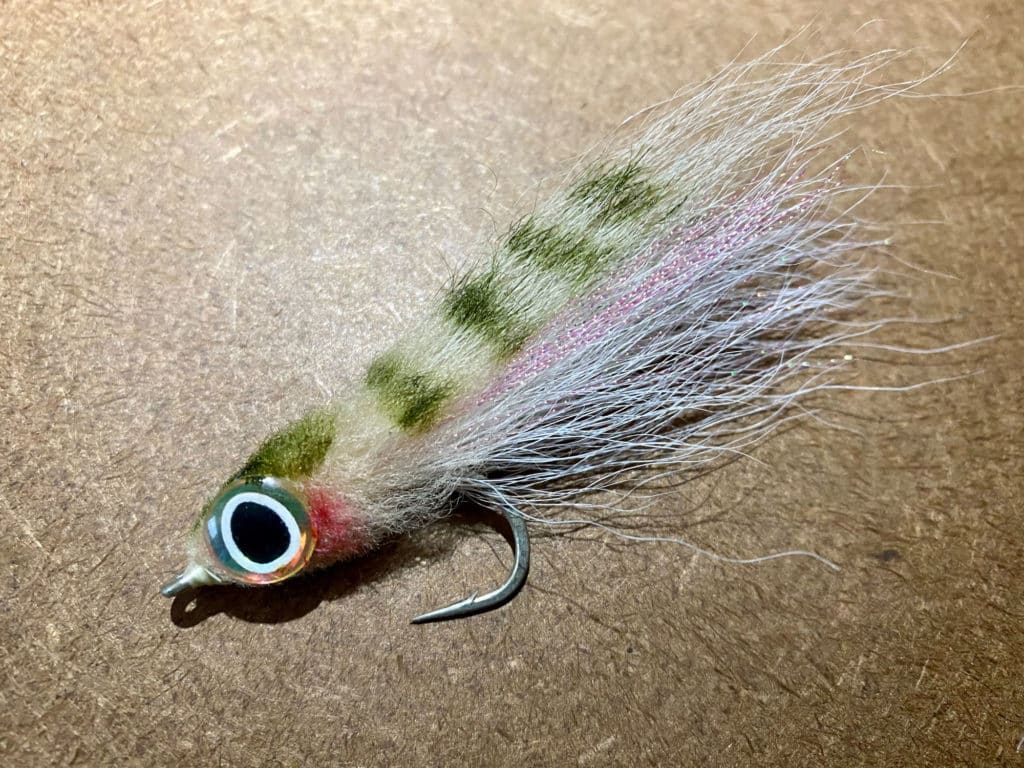
Fish It Right
Fly fishers get in the habit of stripping every fly the same way—twitch, twitch, twitch. But it pays to make a mullet fly move like a mullet. This ranges from a steady swim—which calls for long 1-to 2-foot draws on the line, with perhaps a short pause. Watch the mullet you are fishing around. Are they relaxed, milling about? Or are they streaking along the surface in a panic?
During the fall mullet run, schools speed along impressively, even when predators are not “dogging” them. This is not the best scenario for a hookup. When baits are showering in clear attempts to avoid being eaten by predators, I cast into the melee and allow the fly to sink a bit. Sometimes, it gets grabbed immediately. If it doesn’t, strip it erratically, as if it’s a wounded mullet.
Read Next: Top 10 Shrimp and Crab Flies
When beach tarpon are attacking schooling baits, I usually get more grabs by casting around the outskirts of the school. Tarpon tend to shadow mullet, often rolling lazily in the perimeter until they decide to take their shot and cut right into the school. So work your fly on the edges, where the fish will spot it far more easily than in the middle of hundreds of baitfish.









